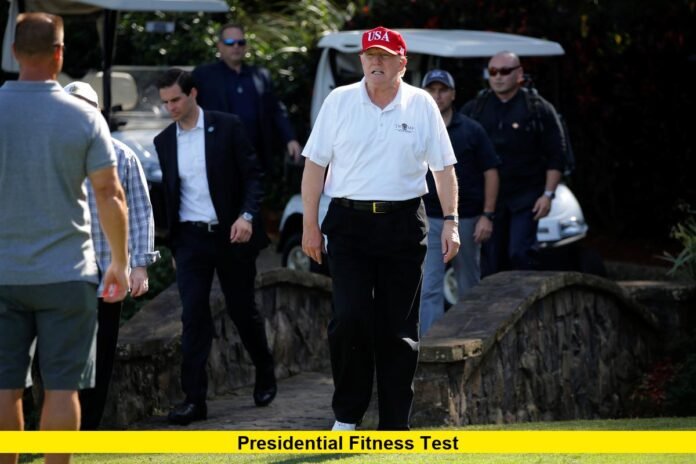The Presidential Fitness Test is once again making headlines as President Donald Trump officially reinstates the decades-old program in American public schools. The decision was made public today, with the president signing an executive order at the White House, surrounded by professional athletes and health officials—all united in their mission to emphasize physical fitness as a cornerstone of student life.
First introduced by President Lyndon Johnson in 1966, the Presidential Fitness Test became a rite of passage for generations of students. Children were challenged with exercises like running, push-ups, sit-ups, pull-ups, and the sit-and-reach, all designed to assess physical capability and encourage healthy habits. However, in 2012, under President Barack Obama, the program was replaced by the FitnessGram, which focused more on personal health goals rather than comparative athletic performance.
A Major Comeback: What’s Changing?
President Trump’s decision to bring back the Presidential Fitness Test signals a pivot toward celebrating athletic excellence and cultivating a national culture of physical strength. The new executive order reestablishes not only the test itself but also the President’s Council on Sports, Fitness, and Nutrition—now chaired by golfer Bryson DeChambeau, who attended today’s launch alongside other sports figures like Kansas City Chiefs kicker Harrison Butker, former New York Giants linebacker Lawrence Taylor, and WWE legend Paul “Triple H” Levesque.
The new order, administered by Health and Human Services Secretary Robert F. Kennedy Jr., includes:
- Implementation of the traditional Presidential Fitness Test in public schools nationwide.
- A Presidential Fitness Award recognizing top-performing students.
- School-based programs that reward excellence in physical education.
- Partnerships between the council, professional athletes, and major sports organizations to advocate for youth fitness and health.
Read also-What is included in presidential fitness test standards
Why Now?
As highlighted by White House press secretary Karoline Leavitt, the renewed focus comes amid growing concerns over declining youth fitness and rising inactivity. The administration hopes that reintroducing the Presidential Fitness Test will:
- Motivate students to build lifelong healthy habits.
- Tackle what officials describe as a “widespread epidemic” of declining physical health.
- Emphasize competition, discipline, and national pride in physical achievement.
Reaction from the Sports World
Today’s announcement drew a crowd of renowned athletes, many of whom expressed strong support for the initiative. Bryson DeChambeau will now head the President’s Council, tasked with ensuring the rollout is successful and meets contemporary health standards. While the event spotlighted prominent figures, it also drew some controversy due to past remarks and histories associated with a few of the invited athletes.
How the Presidential Fitness Test Works
The restored test brings back familiar assessments:
| Exercise | Purpose |
|---|---|
| Push-Ups | Measures upper body strength |
| Sit-Ups | Core strength and endurance |
| Pull-Ups | Upper body endurance |
| Shuttle Run | Speed and agility |
| Sit-and-Reach | Flexibility |
| 1-Mile Run/Walk | Cardiovascular fitness |
Those excelling in each category will be eligible for a renewed Presidential Fitness Award, bringing a sense of achievement and friendly competition to physical education classes.
Looking Ahead
With this executive order, schools are expected to begin implementing the new fitness standards starting in the upcoming academic year. The council will also develop fresh criteria for fitness awards and work toward expanding partnerships with sports organizations nationwide.
As President Trump’s administration sets its sights on strengthening America’s youth, only time will tell how the return of the Presidential Fitness Test will impact the next generation’s health and athletic spirit.
Do you remember taking the Presidential Fitness Test? Share your thoughts on its comeback, or let us know how you think today’s students will adapt!
